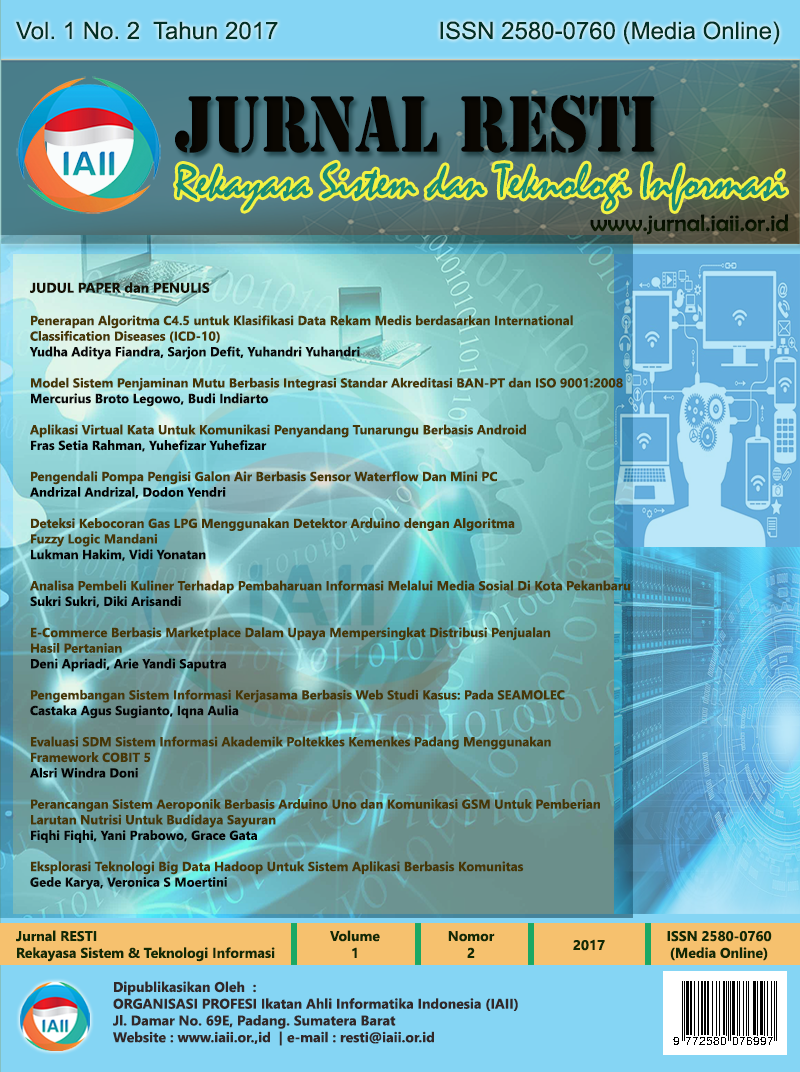Aplikasi Virtual Kata Untuk Komunikasi Penyandang Tunarungu Berbasis Android
Abstract
Deaf people are people who lose either their partial or complete hearing ability which will make the sense of hearing unusable. The problem encountered when meeting a deaf person is unable to communicate well. To solve this problem, it is necessary to build a virtual word application that is android based to help communicate with the deaf people. This app uses 3D virtual characters as a voice-translating medium into a sign language. The sign language is converted to 3D animation to make it easier to understand and attractive. The sign language system used in this application is the SIBI system (Sistem Isyarat Bahasa Indonesia). This application is built by using Unity 3D software with C # and Java programming language, while to create 3D animation is using Blender software. From the test results of this application, obviously it can facilitate the communication with the deaf people.
Keywords: word virtual application, deaf communication, 3D sign language animation, SIBI, android.
Downloads
References
[2] Munir, Multimedia Konsep & Aplikasi dalam Pendidikan, 1st ed. Bandung: Alfabeta, 2013.
[3] B. A. Pranata, Mudah Membuat Game dan Potensi Finansialnya dengan Unity 3D. Jakarta: Elex Media Komputindo, 2015.
[4] G. Budiman, “Perancangan Aplikasi Speech To Text Bahasa Inggris Ke Bahasa Bali Menggunakan Pocketsphinx Berbasis Android ( Design Application Speech To Text English To Balinese Language Using Pocketsphinx Base On Android ),†Bandung Univ. TELKOM, vol. 1, no. 1, pp. 1–10, 2014.
[5] Suarga, Dasar Pemrograman Komputer dalam Bahasa Java. Yogyakarta: Andi, 2009.
[6] W. Komputer, Belajar Pemograman C#. Yogyakarta. Yogyakarta: Andi, 2008.
[7] F. L. K. Nida, “Komunikasi Bagi Anak Berkebutuhan Khusus,†At-Tabsyir, J. Komun. Penyiaran Islam, vol. 1, no. 2, pp. 163–189, 2013.
[8] P. K. Tim, Kamus Sistem Isyarat Bahasa Indonesia, 1st ed. Departemen Pendidikan dan Kebudayaan, 1994.
Copyright (c) 2017 Jurnal RESTI (Rekayasa Sistem dan Teknologi Informasi)

This work is licensed under a Creative Commons Attribution 4.0 International License.
Copyright in each article belongs to the author
- The author acknowledges that the RESTI Journal (System Engineering and Information Technology) is the first publisher to publish with a license Creative Commons Attribution 4.0 International License.
- Authors can enter writing separately, arrange the non-exclusive distribution of manuscripts that have been published in this journal into other versions (eg sent to the author's institutional repository, publication in a book, etc.), by acknowledging that the manuscript has been published for the first time in the RESTI (Rekayasa Sistem dan Teknologi Informasi) journal ;








